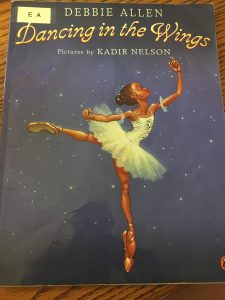 Title: Dancing in the Wings
Title: Dancing in the Wings
Author: Debbie Allen
Illustrator: Kadir Nelson
Publisher and Year: The Penguin Group, 2000
Number of Pages: 29
Genre: Realistic Fiction
Analysis: Dancing in the Wings is about a young girl, Sassy, who loves ballet but is taller than all of her peers. Throughout the book, Sassy learns to embrace her difference leading to her success near the end of the book.
This book could function as a mirror for all young girls who love dancing but do not always feel that their appearance is the same as their classmates. Girls typically struggle more with self-image compared to boys, so this book helps young girls embrace their characteristics. I think that this book could also function as a mirror for African American girls. They could see themselves through Sassy and her family. Having a book that is applicable to African American girls can make these girls feel included and understood. A window is another function of this book because people can learn about some aspects of a different culture from this book.
Perceptually, this book portrays a musical, beautiful and elegant cover that makes one believe that the same types of images will continue throughout the book. However, that is not the case at all. Within the images, Sassy appears to have two different sides to her personality. One aspect of her personality portrays elegance through the dancing images. Another aspect of Sassy’s character that is portrayed in the images is her athletic and tomboy characteristics, as seen in the images below. However, all of the images are beautifully drawn throughout the entire book.
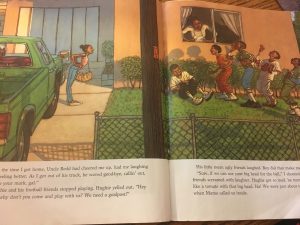
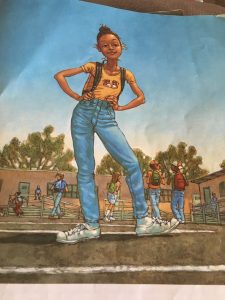
Structurally, Sassy is taller and larger than her classmates, showing that she is stronger than her classmates as well. This is symbolic to the ending of the book, when Sassy outlasts all of her classmates in a tryout. The unframed images allow the audience to feel included in the story and allow the audience to connect with Sassy and her challenges that she faces throughout the book. Throughout most of the book, Sassy is facing left. This is a way for viewers to see that Sassy is less secure with herself. After Sassy wins the dance contest between other girls she still continues to face towards the left, which can be a sign of the lack of confidence that Sassy has with herself. For the longest time Sassy has been bullied about her height, so her struggle to believe in herself is something that she has learned over time from her peers and teachers.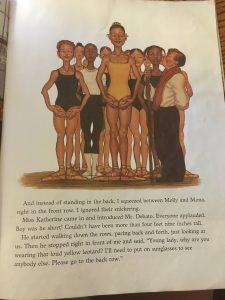
Ideologically, this book expresses the message that one should embrace his or her individuality because what makes him or her unique may be what leads to success. Sassy was successful and won the dance contest because of her height and long legs. What was once a deficit in her mind, became one of her biggest assets. Sassy always worked hard even when her peers would discourage or upset Sassy and in the end all of her hard work paid off. Throughout the book, there were a couple girls who were mean and would upset Sassy. This is a lesson that children should not be taught. Even though this lesson was an essential part of the story plot, children could learn this from the book.

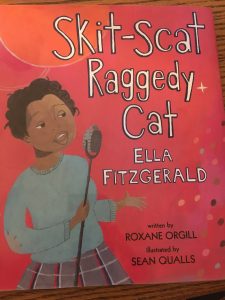
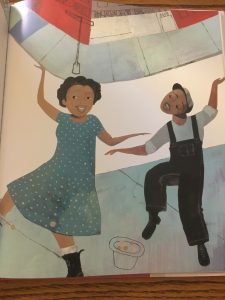
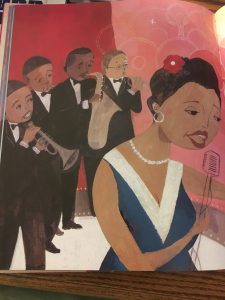
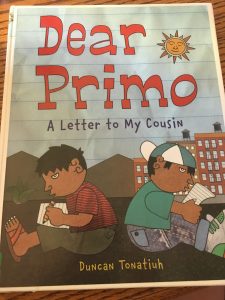
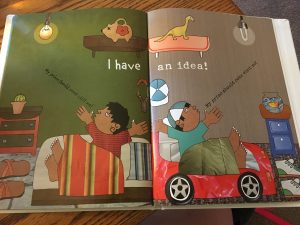 is seen to the right, the boys are both in bed, but the differences of their shoes, lights, beds, shelves, tables and toys all vary based on the culture and country that the boys live in. The images throughout the book add to the words. Often times when Carlitos is writing he will include words in Spanish, so the images help the reader to understand the meaning of those few Spanish words.
is seen to the right, the boys are both in bed, but the differences of their shoes, lights, beds, shelves, tables and toys all vary based on the culture and country that the boys live in. The images throughout the book add to the words. Often times when Carlitos is writing he will include words in Spanish, so the images help the reader to understand the meaning of those few Spanish words.
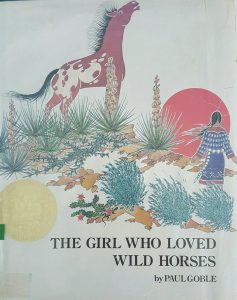
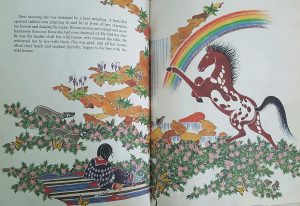


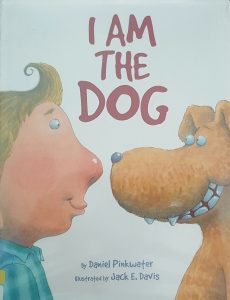


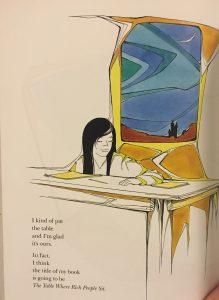
![2016-05-13_14.07.28[1]](https://blogs.iwu.edu/lrbmt2016/files/2016/05/2016-05-13_14.07.281-300x284.jpg)
![2016-05-13_14.08.39[1]](https://blogs.iwu.edu/lrbmt2016/files/2016/05/2016-05-13_14.08.391-300x149.jpg)
![2016-05-10_00.47.03[1]](https://blogs.iwu.edu/lrbmt2016/files/2016/05/2016-05-10_00.47.031-200x300.jpg)
![2016-05-10_00.43.28[1]](https://blogs.iwu.edu/lrbmt2016/files/2016/05/2016-05-10_00.43.281-300x225.jpg)
![2016-05-10_00.42.10[1]](https://blogs.iwu.edu/lrbmt2016/files/2016/05/2016-05-10_00.42.101-300x223.jpg)
![2016-05-10_00.41.15[1]](https://blogs.iwu.edu/lrbmt2016/files/2016/05/2016-05-10_00.41.151-300x220.jpg)